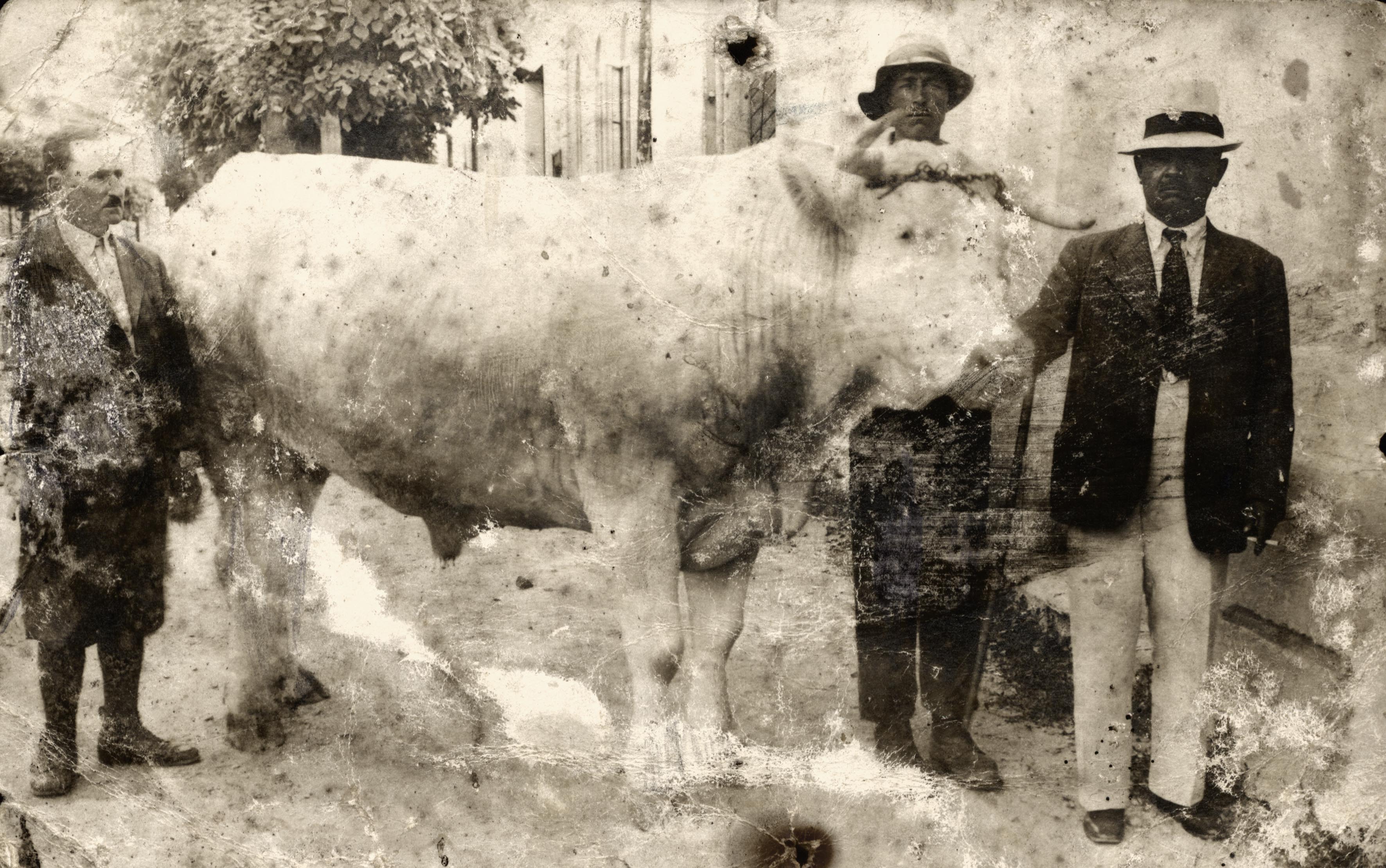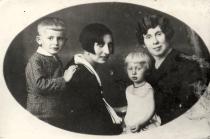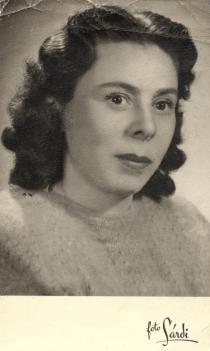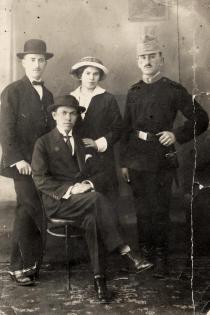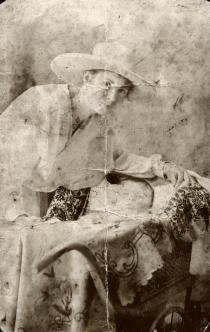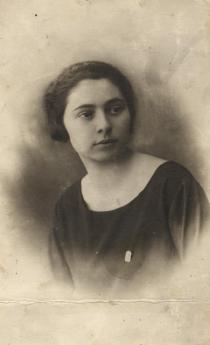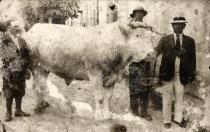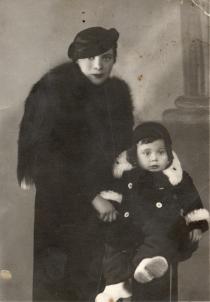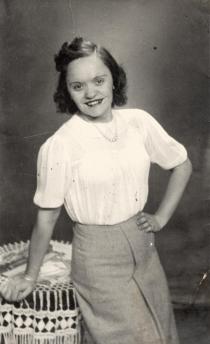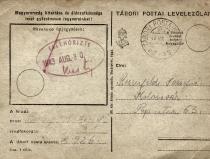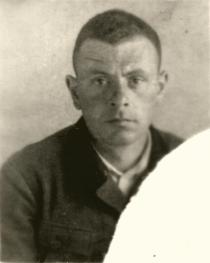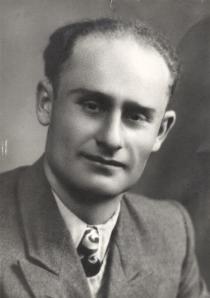This ox weighed 1050 kg, I remember my father told me this.
On the left in the picture that's my father, Dezso Eisikovits, while on the right side that's Samu Teleki, my father's business partner, while behind the ox there's an employee.
After my father wed my mother, grandfather took my father into his business.
They bought and fattened cattle, they exported them to Vienna and Prague - they had an agreement, about the quantity which they had to deliver weekly.
A crash happened around 1928-1930. They worked with a bank called Banca M?maros Blank.
They did the transactions through the bank, they paid through the bank, they encashed through the bank, took money out of the bank for bought cattle.
This bank failed, and they lost the main part of their wealth. [Editor's note: The case could be in relation with the world-wide economic crisis from 1929]
Then my father partnered Samu Teleki and they continued trading cattle. Teleki provided the financial part, while my father was the expert.
Teleki was originally Herskovits, but he had a problem with a member of the Teleki family and he said: 'Just you wait, I'll show you I will be a Teleki too!' And so he became Teleki.
At least I heard so. He was a great landowner. He was famous for his philanthropy. On holidays he prepared meat - pork meat - flour, sugar, oil and grease for his employees, and he also gave some to the poor of the town.
He had three sons, they have been summoned to forced labor to Ukraine, and three daughters.
One of his sons, Jeno Teleki, was a good friend of my father. Jeno's son, who was a very, very good dermatologist in Ramnicu Valcea, was named Samu after his grandfather. I still keep in touch with him.
They kept the cattle usually near the distilleries - I was in Nagyiklod, Szamosujvar and Szentgothard, my father used to take me sometimes with him when he went there, because the stillage, granulated corn that remained after they distilled the spirit, was there, and they fed the cattle with this because it was very fattening.
It was still hot when it flowed into the feedbox, and the cattle ate it with pleasure.
There was a large piece of salt hanged beyond each cattle, because the cattle licked the salt, ate the stillage and then, of course, they had to drink water.
The cholesterol didn't exist [as a problem] then. The cattle had to be large and heavy. They even made pictures about the best specimen.
